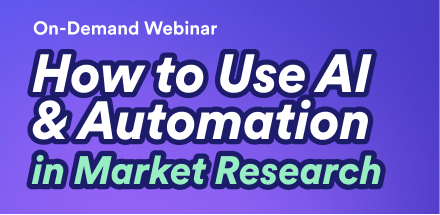Data science apps serve as a way to democratize data, giving anyone the ability to analyze and collect their own insights.
But how do you actually create a data app? Displayr CEO Tim Bock recently outlined the six basic building blocks for constructing a data app.
1) Data type
As you may have guessed, the first building block for any data app is the data itself. Most often, this will be raw data – i.e., tables of data where each row contains an observation and each column represents a variable. However, building a data app with summary tables, user queries, user profiles, or foundational models (e.g., LLMs) is also possible.
The format in which the data is stored will impact the speed of the analysis. Formats like Excel, CSV, and ASCII require missing information (like precise wording and question numbers) to be filled out manually, slowing down the process. Formats like SPSS, MDD, and Triple S contain more data, meaning less time making manual changes and fewer mistakes when working with data.
2) Data ingestion
This is the process of importing these data files from their various sources into a database for analysis. This might occur through integration between your data app builder and a third party (like Qualtrics, Forsta, SurveyMonkey, etc.) or via API. By ensuring the data is properly ingested, the accuracy of your analysis will improve.
3) Analysis
This is what makes your data app valuable. By transforming the raw data into insights, users can interpret information the way they want. Analysis should be seamlessly integrated within the data science app and serve to drive decisions effectively. The type of analysis will vary from case to case, but it often might involve tabulation, filtering, statistical models, machine learning, LLMs, or custom code.
Ready to build your data app?
Start a free trial of Displayr.
4) Visual design/UX
The visual design/UX is what keeps users returning to your data app. This is all about choosing the right tools that allow your users to analyze the data in a simple and interactive way. Selecting the correct navigation tools and visualizations will impact this, as will the app’s overall design and feel. This step is also where you incorporate a company’s brand feel and design if appropriate.
5) Engineering
Engineering covers the process of making your data science app usable (both internally and externally) and getting it online. It covers all of the important parts: hosting, deployment, security, scheduling, logins/authentication, optimization, and caching.
Although UX design will impact the usability of your data app, engineering will also play a role. As you would know, an app’s speed is one of the greatest determinants of its usability. Data apps often have to analyze large volumes of data with each user request, resulting in long loading times. There are some ways to get around this. Scheduling your app to run each day, for example, saves the results (caches them), speeding up the wait time when analyzing data that is constantly changing (like the stock market). See 33:00 in the webinar for a more detailed explanation.
6) Data sharing
Data sharing is about providing stakeholders with tools to take their results from the data science app and share them. This could be a screenshot, PDF, Excel document, PowerPoint, Slack/email alert, or even data sent via APIs. This building block is significant because data apps are designed to be worked on collaboratively, with the insights shared.
Displayr provides a comprehensive app development platform that allows users to create, customize, and host their initial app within a single solution. It’s designed to scale with your expertise, featuring user-friendly drag-and-drop options alongside complete R integration for those who enjoy coding. Schedule a demo and experience it for yourself today.

